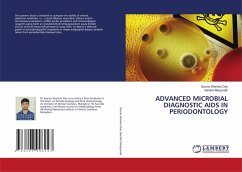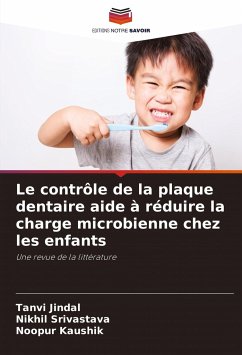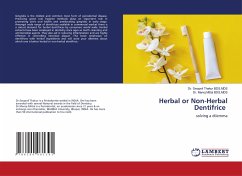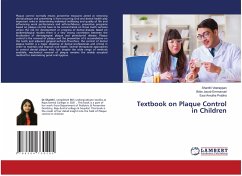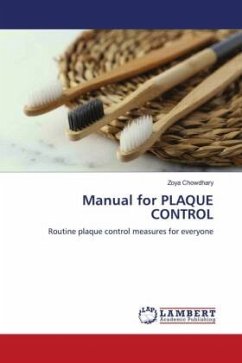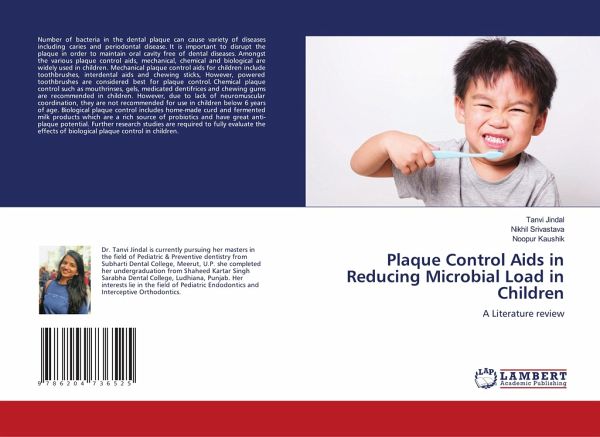
Plaque Control Aids in Reducing Microbial Load in Children
A Literature review
Versandkostenfrei!
Versandfertig in 6-10 Tagen
40,99 €
inkl. MwSt.

PAYBACK Punkte
20 °P sammeln!
Number of bacteria in the dental plaque can cause variety of diseases including caries and periodontal disease. It is important to disrupt the plaque in order to maintain oral cavity free of dental diseases. Amongst the various plaque control aids, mechanical, chemical and biological are widely used in children. Mechanical plaque control aids for children include toothbrushes, interdental aids and chewing sticks, However, powered toothbrushes are considered best for plaque control. Chemical plaque control such as mouthrinses, gels, medicated dentifrices and chewing gums are recommended in chil...
Number of bacteria in the dental plaque can cause variety of diseases including caries and periodontal disease. It is important to disrupt the plaque in order to maintain oral cavity free of dental diseases. Amongst the various plaque control aids, mechanical, chemical and biological are widely used in children. Mechanical plaque control aids for children include toothbrushes, interdental aids and chewing sticks, However, powered toothbrushes are considered best for plaque control. Chemical plaque control such as mouthrinses, gels, medicated dentifrices and chewing gums are recommended in children. However, due to lack of neuromuscular coordination, they are not recommended for use in children below 6 years of age. Biological plaque control includes home-made curd and fermented milk products which are a rich source of probiotics and have great anti-plaque potential. Further research studies are required to fully evaluate the effects of biological plaque control in children.



